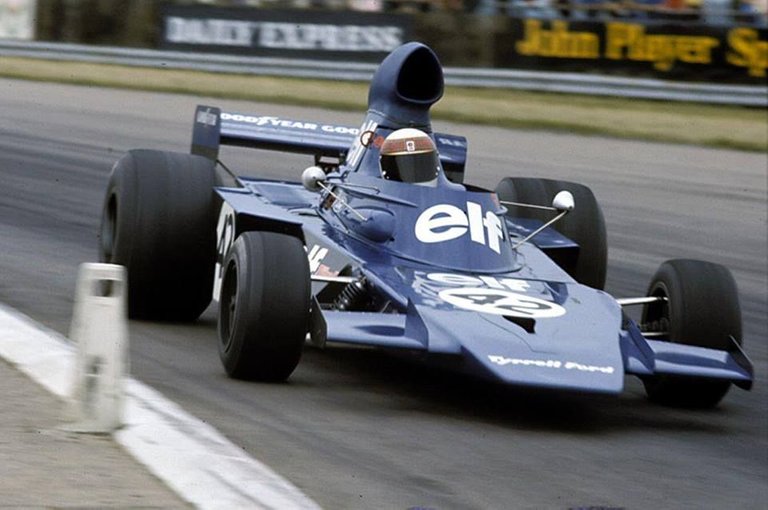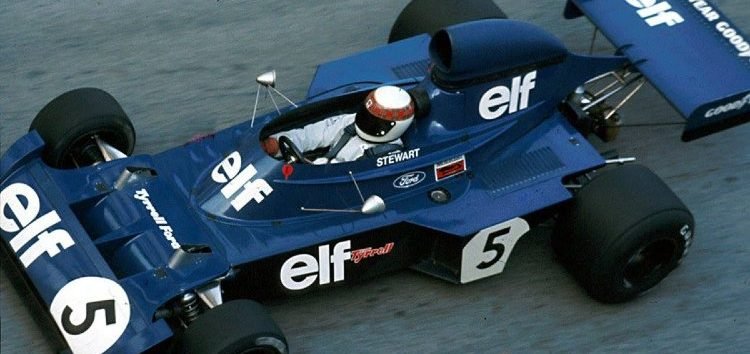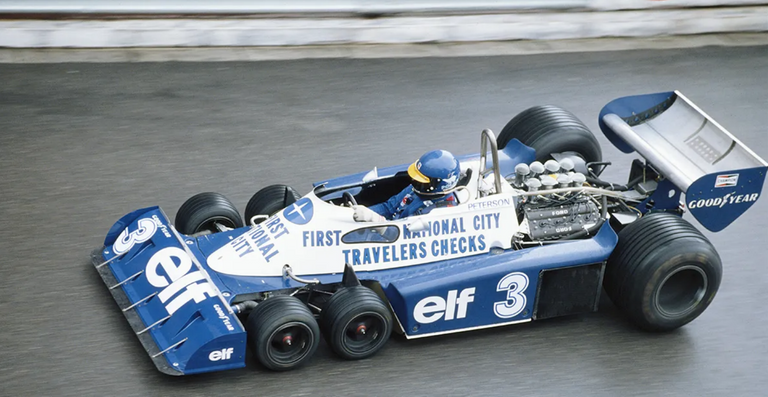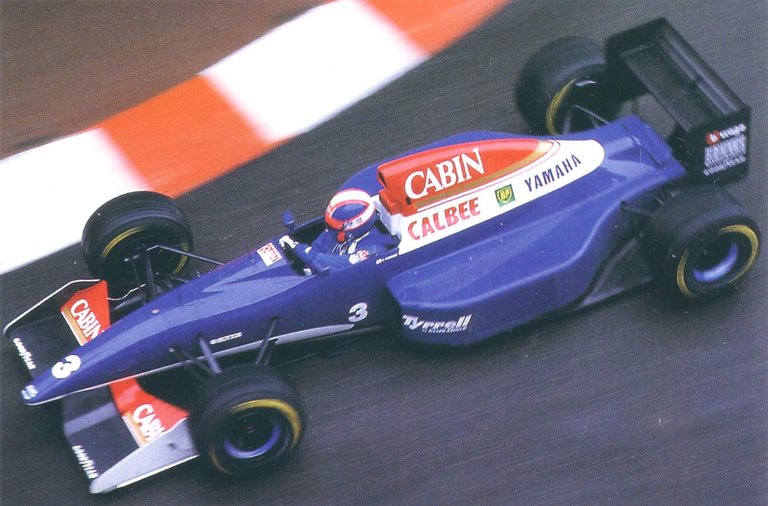
Al final de la temporada pasada dos equipos de Fórmula 1 dijeron adiós a sus nombres: Renault y Racing Point son los dos últimos nombres que dicen adiós a la parrilla de la máxima categoría, aunque si, en realidad, se ha tratado solo de un cambio de nombre: Racing ahora es Alpine y Racing Point se llama ahora Aston Martin.
La mayor parte de los equipos ha quedado invariado por lo cual podríamos hablar solo de un cambio de nombre y de estrategias comerciales tendientes a promocionar nuevas líneas de productos.
Pero no siempre ha sido así. Ha habido equipos en Fórmula 1 que han competido durante décadas y cuando esta categoría del automovilismo mundial se ha transformado en un verdadero business han sucumbido, no han podido continuar compitiendo a alto nivel.
Recuerdo cuando vivía en Italia y las noticias de Ferrari eran el pan cotidiano de las noticias deportivas ya se hablaba de que una temporada del 2010 en adelante le costaba al "Cavallino Rampante" -y también en menor medida a Mercedes cuando hace su debut- la friolera de 500 millones de euros al año entre sueldos de pilotos, personal técnico, ingenieros y desarrollo del monoplaza.
Cifras exorbitantes que llevaron hace un par de años a la F1 a limitar las innovaciones tecnológicas -hasta el 2022- para tratar de quebrar esa especie de monopolio (tal vez la palabra oligopolio sería más adecuada) en favor de dos o tres equipos (Red Bull, Ferrari y Mercedes).
Ferrari ya sufrió las consecuencias. Red Bull y Mercedes resisten todavía pero ya se ve un mayor equilibrio en ambos campeonatos (Pilotos y Constructores).
Entre estos equipos que han tenido que rendirse a un mercado cada vez más competitivo y con un empleo de recursos ecoómicos y técnicos cada vez más altos, hay algunos que han dejado su huella a través de décadas de competencia.
Otros, en cambio, soportados solo por la esponsorización y el marketing de determinadas empresas han sobrevivido muy poco.
Esta serie de tutoriales se referirá a los primeros -inicialmente-, a aquellas que han dejado su marca, su huella y su recuerdo entre los simpatizantes de la Fórmula 1 cualquiera sea su edad.
Hoy nos referimos a Tyrrell, el equipo fundado por Ken Tyrrell en 1970 que fue campeón del mundo en el año 1971 no solo como equipo sino que también terminó consagrando a Jack Stewart, el "escocés volador" como campeón mundial de la categoría. Halago que repite dos años más tarde en 1973.
Luego de un declino paulatino y persistente en los años 1980-1990 abandona la F1 y es adquirida por la British American Racing (subsidiaria de British American Tobacco -BAT-) en 1998 que debuta en la F1 en 2001 con el nombre de BAR (sus iniciales) participando activamente hasta el 2005
En realidad el objetivo principal era patrocinar su principal producto Lucky Strike siendo una multinacional tabacalera.
Posteriormente la normativa europea (y mundial) de prohibir la publicidad de los productos tabacaleros en diversos eventos deportivos y entre ellos en los circuitos y máquinas de F1, anuló el efecto marketing de esta esta esponsorización y el equipo comenzó a debatirse de nuevo en la incertidumbre de los resultados y su futuro.
Pero volvamos al equipo Tyrrell.

At the end of last season two Formula 1 teams said goodbye to their names: Renault and Racing Point are the last two names to say goodbye to the grid of the top category, although, in fact, it was only a change of name: Racing is now Alpine and Racing Point is now called Aston Martin.
Most of the teams have remained unchanged, so we could only speak of a change of name and commercial strategies aimed at promoting new product lines.
But it has not always been like that. There have been teams in Formula 1 that have competed for decades and when this category of world motorsport has become a real business they have succumbed, they have not been able to continue competing at a high level.
I remember when I lived in Italy and Ferrari news were the daily bread of the sports news and there was already talk that a season from 2010 onwards cost the "Prancing Horse" - and also to a lesser extent Mercedes when it makes its debut - a whopping 500 million euros a year between salaries of drivers, technical staff, engineers and development of the single-seater.
Exorbitant figures that led F1 a couple of years ago to limit technological innovations -until 2022- to try to break this kind of monopoly (perhaps the word oligopoly would be more appropriate) in favor of two or three teams (Red Bull, Ferrari and Mercedes).
Ferrari has already suffered the consequences. Red Bull and Mercedes are still resisting, but a better balance in both championships (Drivers and Constructors) is already visible.
Among these teams that have had to surrender to an increasingly competitive market and with a higher and higher use of economic and technical resources, there are some that have left their mark through decades of competition.
Others, on the other hand, supported only by the sponsorship and marketing of certain companies, have survived very little.
This series of tutorials will refer to the first ones -initially-, to those that have left their mark, their footprint and their memory among Formula 1 fans, whatever their age.
Today we refer to Tyrrell, the team founded by Ken Tyrrell in 1970 that was world champion in 1971 not only as a team but also ended up consecrating Jack Stewart, the "flying Scotsman" as world champion of the category. This praise was repeated two years later in 1973.
After a gradual and persistent decline in the years 1980-1990, it left F1 and was acquired by British American Racing (a subsidiary of British American Tobacco -BAT-) in 1998, which debuted in F1 in 2001 under the name BAR (its initials) and participated actively until 2005.
Actually the main objective was to sponsor its main product Lucky Strike being a multinational tobacco company.
Subsequently the European (and world) regulations prohibiting the advertising of tobacco products at various sporting events, including F1 circuits and machines, cancelled the marketing effect of this sponsorship and the team began to struggle again in the uncertainty of the results and its future.
But back to the Tyrrell team.
Los inicios. / The beginnings.

En realidad Tyrrell debuta en el F1 en 1969 cuando hace correro a sus autos con el motor Ford Coswort y el chasis Matra que le da su nombre al equipo que logra obtener nueve victorias en ese periodo siempre con Jack Stewart como piloto y logra ganar en 1969 ambos campeonatos mundiales, de piloto y de constructores. Ya en ese período el equipo estaba manejado por el team de Ken Tyrrell.
Matra en realidad era un enorme grupo industrial especializado en la aeronáutica aunque también incursionaba en las telecomunicaciones, armamentos, transportes, ingeniería aeroespacial y por último industria automovilística.
Hay quienes afirman que la incursión de Matra en la FórmulaUno se debió a una directa intervención del entonces presidente francés Carles De Gaulle quien no podía soportar la ausencia de autos franceses en las competencias de F1.
La temporada 1970 el equipo de Tyrrell comienza corriendo con los monoplazas March (mientras se preparaba la gran aventura en secreto de crear su propio team) hecho que finalmente ocurre cuando faltaban tres carreras para terminar el campeonato.
A partir de ese momento y por un trienio Tyrrell es el equipo de punta en la F1. Gana ambos campeonatos en 1971, llega segunda de nuevo en ambos campeonatos en 1972 y Jack Stewart vuelve a ganar el Mundial de Pilotos en 1973. Todo un suceso.
El retiro de su piloto estrella en el año 1973 comienza a alejarla de los primeros puestos.

Actually Tyrrell made his F1 debut in 1969 when he made his cars race with the Ford Coswort engine and the Matra chassis that gives his name to the team that manages to obtain nine victories in that period always with Jack Stewart as driver and manages to win in 1969 both world championships, drivers and constructors. Already in that period the team was managed by Ken Tyrrell's team.
Matra was actually a huge industrial group specialized in aeronautics, although it also ventured into telecommunications, armaments, transportation, aerospace engineering and, finally, the automobile industry.
There are those who claim that Matra's foray into Formula One was due to a direct intervention by then French President Carles De Gaulle who could not bear the absence of French cars in F1 competitions.
The 1970 season, Tyrrell's team began racing with the March cars (while secretly preparing the great adventure of creating their own team), a fact that finally occurred with three races remaining to finish the championship.
From that moment on and for a triennium Tyrrell is the top team in F1. He won both championships in 1971, finished second again in both championships in 1972 and Jack Stewart won the Drivers' World Championship again in 1973. Quite a success.
The retirement of its star pilot in 1973 begins to move it away from the top positions
El equipo sin Jack Stewart y con seis ruedas. / The team without Jack Stewart and with six wheels.

Jody Scheckter e Patrick Depailler, en ese momento dos jóvenes y promisorios pilotos, uno sudafricano y el otro francés, fueron confirmados como pilotos oficiales en esta nueva era Tyrrell.
Sin embargo los resultados comenzaron a escasear. Solo dos victorias en 1974 y un magro botón también en 1975.
En 1976 introduce con el modelo P 34 una innovación revolucionaria en la F1: el monoplaza con seis ruedas (cuatro delanteros direccionales y dos traseros de conducción).
El "invento" no dio los resultados esperados si bien otros equipos trataron de imitar esta innovación tecnológica: Ferrari en 1976 con la 312 T2 y March en 1977 con la 2-4-0
Si bien en las curvas el monoplaza tenìa una cierta ventaja aerodinámica sobre sus competidores, en las rectas perdía mucha de esa ventaja.
Ello llevó también a las quejas de otros equipos acusando a Tyrrell de salir de los reglamentos y obligando a la FIA a prohibir cualquier tipo de propulsión que no fuera sobre cuatro ruedas.

Jody Scheckter and Patrick Depailler, at that time two young and promising pilots, one South African and the other French, were confirmed as official pilots in this new Tyrrell era.
However, the results began to be scarce. Only two victories in 1974 and a meager button also in 1975.
In 1976, with the P 34 model, he introduced a revolutionary innovation in F1: the single-seater with six wheels (four directional front and two driving rear).
The "invention" did not give the expected results although other teams tried to imitate this technological innovation: Ferrari in 1976 with the 312 T2 and March in 1977 with the 2-4-0
While in the corners the car had a certain aerodynamic advantage over its competitors, on the straights it lost much of that advantage.
This also led to complaints from other teams accusing Tyrrell of going outside the regulations and forcing the FIA to ban any type of propulsion other than four-wheel drive.
El declino final. / The final decline.

El fracaso de las seis ruedas y los pobres resultados llevaron a la crisi de Tyrrell en la década del 80.
El equipo sigue luchando por sobrevivir todavía durante casi dos décadas con resultados que distaban mucho de ser los esperados. Llegando incluso a adulterar el peso mínimo reglamentario en 1984 simulando cargar agua para enfriar los frenos cuando en realidad incoporaba pequeñas pelotitas de plomo en un recipiente especial, motivo por el cual es descalificada y cancelados todos los puntos obtenidos ese año. Esto terminó complicando aún más que, en las temporadas siguientes, tuvo que correr sin esponsores importantes.
En los años 90 deja el Ford Coswort (ya comenzaban a emplearse los motores aspirados con una potencia superior) y pasa primero a Honda y luego a Yamaha sin obtener buenos resultados en ambos casos.
El equipo parece resurgir en 1994 con la guia de Mark Blundell andando a puntos en bien seis carreras, algo inusual para la Tyrrell de esa época conquistando en total 13 puntos y ubicándose en el séptimo lugar en la clasificación general.
Sin embargo los años posteriores continuaron acentuando el declino y obligando en 1998 a Ken Tyrrell a ceder el título deportivo es decir el nombre o marca comercial del monoplaza no obstante durante 1998 considerando un año de transición siguió corriendo con el nombre original.
Una curiosidad: en ese último año (1998) uno de los pilotos sugeridos por Tyrrell al nuevo team era el de Jos Verstappen (el padre del actual Max Verstappen) que no pudo sentarse por último vez a la butaca de un Tyrrell por no contar con los esponsores necesarios.

The failure of the six wheels and poor performance led to Tyrrell's crisis in the 1980s.
The team is still struggling to survive for almost two decades with results that were far from being expected. Even going so far as to adulterate the minimum regulatory weight in 1984 by pretending to load water to cool the brakes when in fact it incorporated small lead balls in a special container, which is why it is disqualified and all the points obtained that year are canceled. This ended up making it even more complicated that, in the following seasons, he had to run without major sponsors.
In the 90s, he left the Ford Coswort (aspirated engines with a higher power were already beginning to be used) and went first to Honda and then to Yamaha without obtaining good results in both cases.
The team seems to make a comeback in 1994 with Mark Blundell's guidance going on points in well six races, something unusual for the Tyrrell of that era, scoring a total of 13 points and placing seventh in the overall standings.
However, the subsequent years continued to accentuate the decline and in 1998 forcing Ken Tyrrell to give up the sports title, that is, the name or trademark of the car, however during 1998, considering a transition year, he continued running with the original name.
A curiosity: in that last year (1998) one of the pilots suggested by Tyrrell to the new team was Jos Verstappen (the father of the current Max Verstappen) who could not sit in the seat of a Tyrrell for the last time because he did not have the necessary sponsors.
Artículo traducido con / Article translated with DeepL translator free version
El separador de párrafos -modificado por el autor de este artículo- es obra del usuario @thepeakstudio
The paragraph separator -modified by the author of this article- is the work of the user @thepeakstudio


Congratulations @greengalletti! You have completed the following achievement on the Hive blockchain and have been rewarded with new badge(s) :
Your next target is to reach 900 replies.
You can view your badges on your board and compare yourself to others in the Ranking
If you no longer want to receive notifications, reply to this comment with the word
STOPThank you for the constant support of my content and for the work carried out in favor of the Community @hivebuzz.
De nada @greengalletti, es un placer 😊🌹 ¡que tengas un buen día!
The rewards earned on this comment will go directly to the person sharing the post on Twitter as long as they are registered with @poshtoken. Sign up at https://hiveposh.com.
Gracias por compartir mis contenidos @poshtoken, saludos.